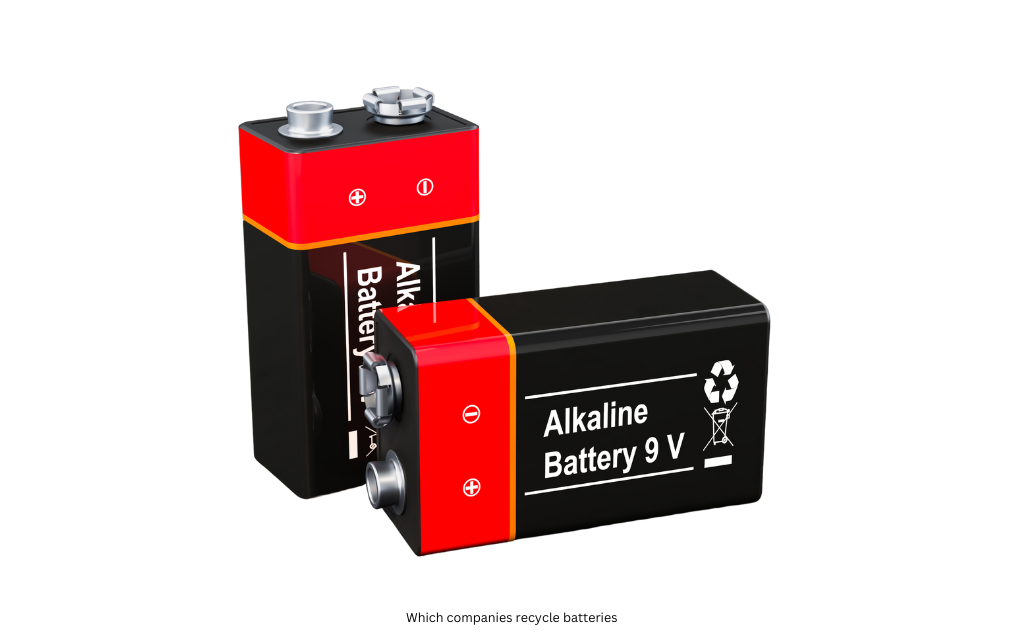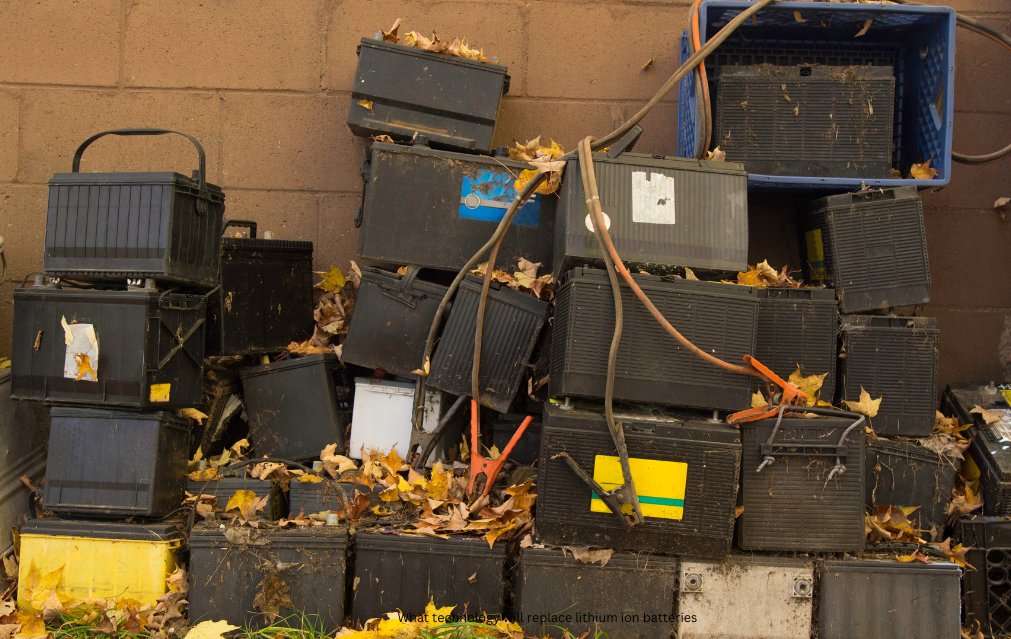People often wonder which future technology will replace lithium-ion batteries. Electric vehicles and renewable energy systems generate increasing energy storage needs as the critical points of lithium-ion battery limitations emerge. The price of these batteries remains high and their recharging time demands patience while they also present environmental concerns.
Our pursuit of sustainability demands finding better battery solutions now more than ever. This article examines upcoming advanced technologies that might assume the lithium-ion battery’s role alongside their prospective effects on global power storage management. Keep reading to discover what the future holds and which technologies are leading the charge in battery innovation!

How Lithium-Ion Batteries Work and Why They’re Everywhere
Lithium-ion batteries are a key part of many devices we use every day. They store energy using lithium ions, which move between two electrodes: the positive and negative ends. When you charge the battery, lithium ions move to the positive side. When the battery is used, the ions flow back to the negative side, creating an electrical current. This flow of ions is what powers your devices.
These batteries are popular because they are lightweight, have a high energy density, and can be recharged many times. They became the standard for powering everything from smartphones to electric cars. Their ability to hold a lot of energy in a small space made them perfect for portable electronics and electric vehicles, which is why they’re found in so many gadgets today.
The beneficial properties of lithium-ion batteries exist together with several problematic aspects. Assembly needs to identify different energy solutions because the increasing energy demands and improving efficiency standards create a need to move beyond traditional power systems.
The Challenges of Lithium-Ion Batteries
While lithium-ion batteries have been a game-changer, they also come with some significant problems. One of the main issues is energy density. Lithium-ion batteries store a lot of energy, but not enough to meet the growing demands of electric vehicles (EVs) and large-scale energy storage. This limits how far an EV can drive on a single charge and makes it harder to store renewable energy efficiently. As a result, new battery technologies are needed to store more energy in less space.
The cost of lithium-ion batteries is another challenge. Extracting lithium is expensive and the price is rising as the demand increases. The process also has environmental and ethical concerns, as mining lithium can cause pollution and harm local communities. This makes it clear that we need alternatives that are more affordable and sustainable.
Safety is also a major issue. Lithium-ion batteries can overheat, causing fires or even explosions. This happens because of a problem called thermal runaway, where the battery’s temperature rises uncontrollably. The risk of fires, especially in electric vehicles, has raised alarms and highlighted the need for safer battery technology.
Lithium-ion batteries have profound negative effects on the environment that cannot be dismissed. The extraction process of lithium yields pollution effects while eliminating batteries results in hazardous waste production. The improper disposal of old batteries results in increasingly sizable landfill expansion. Scientific investigators currently seek out alternative battery systems which provide environmentally friendly operations combined with security and sustainability.
Technologies That Could Replace Lithium-Ion Batteries
As lithium-ion batteries face challenges, many new technologies are emerging as possible replacements. Let’s dive into some of the most promising alternatives.
A. Solid-State Batteries
The fundamental structure of solid-state batteries consists of electrolytes in solid form rather than using traditional liquid electrolytes of lithium-ion batteries. This change brings many benefits. Systems using energy density at higher levels allow batteries to store enhanced quantities of power in compact dimensions. The inclusion of solid-state batteries results in better safety measures since these electrolytes show decreased tendencies to start fires and fail to overheat. The extended product lifespan of these batteries makes them highly competitive to replace lithium-ion batteries in coming years.
B. Sodium-Ion Batteries
Sodium-ion batteries use sodium, a material found in abundance, making them cheaper and easier to produce than lithium-ion batteries. They are an attractive option for lower-cost energy storage. However, they face some challenges with energy density, meaning they don’t store as much energy as lithium-ion batteries. Researchers are working hard to improve this issue and make sodium-ion batteries a better alternative.
C. Lithium-Sulfur Batteries
Lithium-sulfur batteries use sulfur, which is abundant and cheap, making them a cost-effective alternative to lithium-ion batteries. They have the potential for much higher energy density. However, one major issue is cycling stability—the ability of the battery to keep working over many charge cycles. Research is ongoing to improve the durability of lithium-sulfur batteries, and their potential is still strong.
D. Graphene-Based Batteries
Graphene-based batteries use graphene, a form of carbon, to boost energy capacity and allow for fast charging. These batteries are exciting because they could charge devices in minutes instead of hours. However, the technology is still developing, and scaling up graphene batteries to make them affordable and practical for everyday use is one of the biggest challenges right now.
E. Zinc-Air Batteries
Zinc-air batteries are different because they use zinc and air to produce electricity. These batteries are attractive because they are environmentally friendly, using materials that are more abundant and less harmful to the planet. They could also be great for large-scale energy storage, like storing energy from wind or solar power. However, their energy density needs to be improved before they can fully replace lithium-ion batteries.
F. Flow Batteries
Flow batteries store energy in liquid electrolytes inside external tanks. This makes them highly scalable, meaning they can be used in large energy storage systems, such as for solar or wind energy. They have the potential to store huge amounts of energy. However, they currently face challenges with low energy density and high cost, which need to be addressed for them to become a widely used solution.
G. Other Technologies
There are also other exciting technologies being researched. Magnesium-ion batteries and aluminum-ion batteries offer potential for lower costs and better safety. Air batteries, which use oxygen from the air to generate power, are another promising area. While these technologies are still in the early stages, they could all play a role in the future of energy storage.
These new battery technologies could eventually replace lithium-ion batteries, but each faces its own set of challenges. Researchers are working hard to overcome these obstacles, and the future of energy storage looks bright with these innovative solutions on the horizon.
Why Are These Technologies Important?
Finding alternatives to lithium-ion batteries is more important than ever as the world seeks sustainable energy solutions. The demand for energy is growing, and our current battery technology can’t keep up with the needs of electric vehicles, renewable energy, and everyday electronics. The search for new technologies could help solve some of the world’s biggest energy challenges.
One of the biggest reasons these alternatives matter is sustainability. Many of the newer battery technologies, like sodium-ion and zinc-air batteries, rely on materials that are more abundant and easier to source. This could reduce our dependence on rare earth elements, which are expensive and difficult to mine. By using more common materials, these technologies could help create a more sustainable future for energy storage.
The environmental impact of lithium-ion batteries is also a major concern. Mining for lithium can damage ecosystems and create pollution. In contrast, many of the new battery technologies are greener options. For example, zinc-air batteries are made from more environmentally friendly materials. These alternatives offer a chance to reduce the negative impact that traditional batteries have on the planet.
Lastly, cost is a big factor. The advancement of new technology has created potential cheaper power solutions compared to lithium-ion batteries. The mass production of new technologies will reduce manufacturing expenses for all sectors including both energy industries and consumers. Making energy storage more accessible through lower costs will boost the transition toward sustainable clean energy platforms.
These technologies are more than just alternatives—they offer a way forward toward a cleaner, cheaper, and more sustainable energy future.

What’s the Timeline for Replacing Lithium-Ion Batteries?
The race to replace lithium-ion batteries is exciting, but it’s still in the early stages. Researchers are making great progress, but there are some challenges ahead. These include issues with scaling up production, ensuring cost-effectiveness, and improving reliability. While these new battery technologies show promise, they’re not ready for widespread use just yet.
Some technologies, like solid-state batteries, could take 10 to 15 years before they become commercially viable. Solid-state batteries are a big breakthrough, but there’s still work to be done to make them affordable and reliable. Researchers need to figure out how to scale production without driving up costs, and they also need to ensure the batteries perform well in real-world conditions.
Other technologies, like sodium-ion or zinc-air batteries, are progressing faster. These might be ready for certain applications within the next 5 to 10 years. However, they still need improvements in energy density and durability before they can completely replace lithium-ion batteries.
Recording improvements do continue yet these technologies need an additional ten years or longer to reach commercial readiness. Research work on new battery technologies will eventually provide better sustainable power sources that will replace existing lithium-ion batteries.
What’s Next for Battery Technology?
The next decade holds exciting possibilities for batteries. Scientists are exploring new materials like solid-state electrolytes and sodium-ion cells. These could be safer, cheaper, and more efficient than today’s lithium-ion batteries.
Renewable energy systems will benefit the most. Wind and solar energy can be stored better with advanced batteries, making electricity available even when the sun isn’t shining or the wind isn’t blowing. Homes and businesses might rely on small, powerful battery units to keep the lights on during outages.
The electrical power network will undergo fundamental changes. The smarter electricity grid system operates along with advanced batteries that perform supply-demand management. The grid system will maintain renewable excess power by storing it for upcoming requirements.
Overall, the future of batteries looks bright. Cleaner, longer-lasting solutions will support a greener world, and they’ll change the way we power our lives.
Conclusion: Shaping a Sustainable Tomorrow
Emerging battery technologies are key to solving our energy challenges. They offer cleaner, more efficient ways to store power, making renewable energy more reliable. Industries like electric vehicles and grid storage will rely on these advancements to grow and innovate.
These technologies don’t just improve how we use energy; they help us protect the planet. As more people and businesses adopt them, we’ll see a shift toward a greener, more sustainable future.
The journey ahead is full of possibilities. By embracing these breakthroughs, we can build a world that runs on cleaner energy and leaves a better legacy for future generations.
